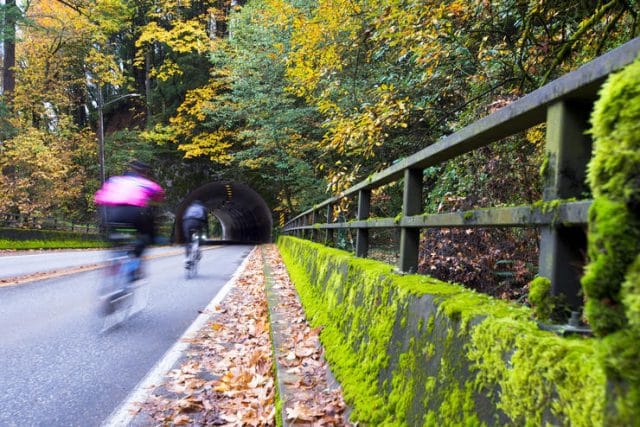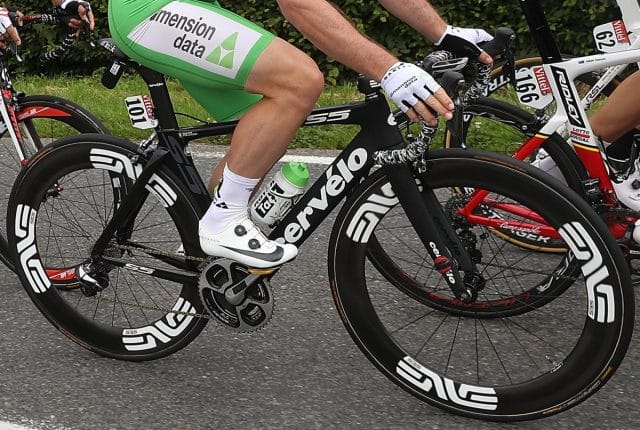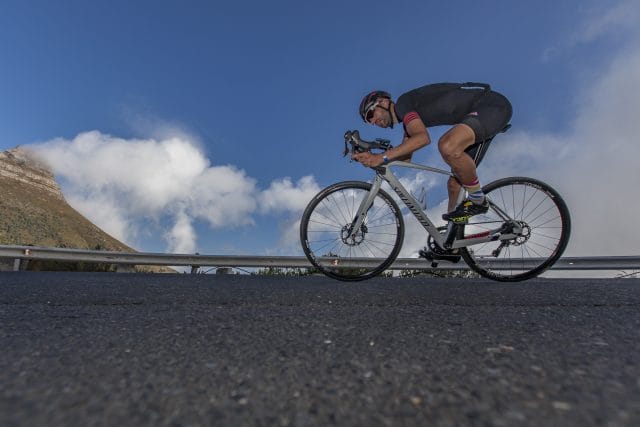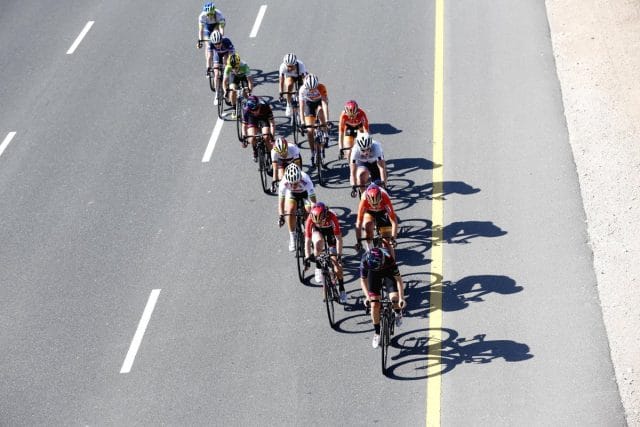Hunching over your handlebars not only reduces your wind profile but it also makes you more stable on the bike. Keep in mind that baggy clothing—such as the “windbreaker”—will compromise your ability to weather a storm.
When it comes to drafting in a crosswind, the sweet spot relative to those breaking the wind ahead of you is behind them and off to the side, since air resistance is the angled combination of adjacent wind and your forward progress through it. Even when pedaling side-by-side with a companion, the leeward rider has an advantage. In a cooperative group or paceline, form an echelon by lining up in a diagonal and swing off on the windy side when your turn at the front is done.
If you’re racing, keep in mind that you can help or hinder the riders nearby based on how much room you leave for them on the side of the road. For example, if the breeze comes from the right and the sheltered position is to your left, you can put them “in the gutter” by riding on the far left side of the road.
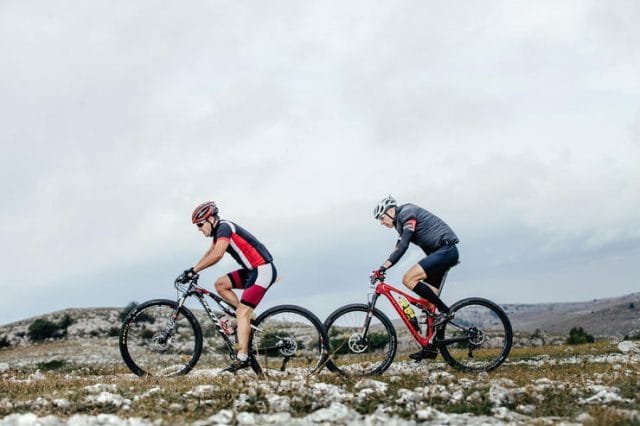
While there’s something to be said for getting accustomed to battling the elements, I try to do interval training and structured portions of my workouts in a tailwind. Not only does this provide a mental boost, but sailing along at higher speed simulates the velocity and leg peed of racing in a group. My power output consistently increases when I train with the wind at my back.

I aim to end every ride with a tailwind. But since even a crosswind hinders a cyclist’s progress, and since wind direction often changes, I’ve accepted that my plan to end each ride with a boost rarely works. On windy days, the wiser plan is to budget extra time and energy for the trip home.
